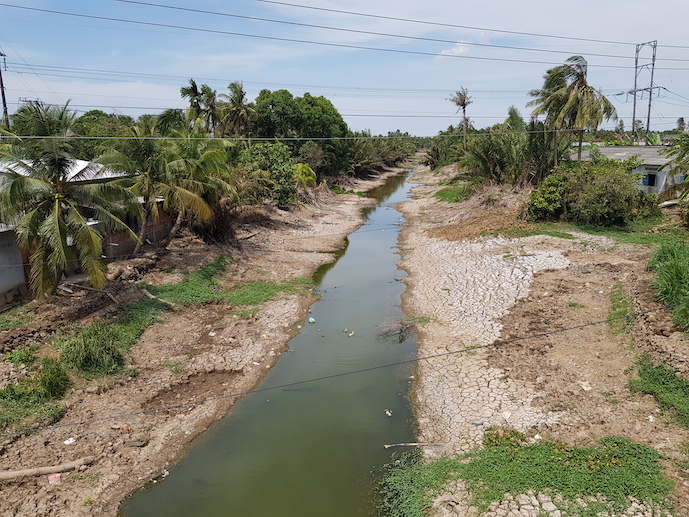HCMC – Saltwater intrusion in Vietnam’s Mekong Delta is expected to intensify between February 11 and 16 before gradually receding, according to the National Center for Hydro-Meteorological Forecasting.
While peak salinity levels at most monitoring stations remain lower than in February last year, certain stations in Ca Mau Province have recorded higher-than-usual salinity, reported the Vietnam News Agency.
Saltwater has pushed further inland in key river systems. The 4‰ salinity threshold has reached 45-55 km in the Vam Co Dong and Vam Co Tay rivers, with similar levels observed in the Cua Tieu, Cua Dai, Ham Luong, Co Chien, and Hau rivers. The Cai Lon River has seen intrusion extending 30 to 40 km.
Forecasters predict that saltwater intrusion during the 2024-2025 dry season will be more severe than the historical average but less extreme than the 2015-2016 and 2019-2020 seasons. The peak period for intrusion in the Mekong River estuaries is expected from February to March, while the Vam Co and Cai Lon rivers are likely to see peak salinity between March and April.
The severity of saltwater intrusion depends on upstream water flows from the Mekong River and tidal conditions. Authorities have urged local governments and residents to stay updated on forecasts and implement preventive measures, with the disaster risk warning for saltwater intrusion currently at Level 2.
Experts have recommended that farmers cultivate salt-tolerant crops and adjust livestock choices accordingly. Fruit growers should test water salinity before irrigation, while aquaculture farmers should closely monitor salinity levels to optimize stocking and harvesting schedules.











